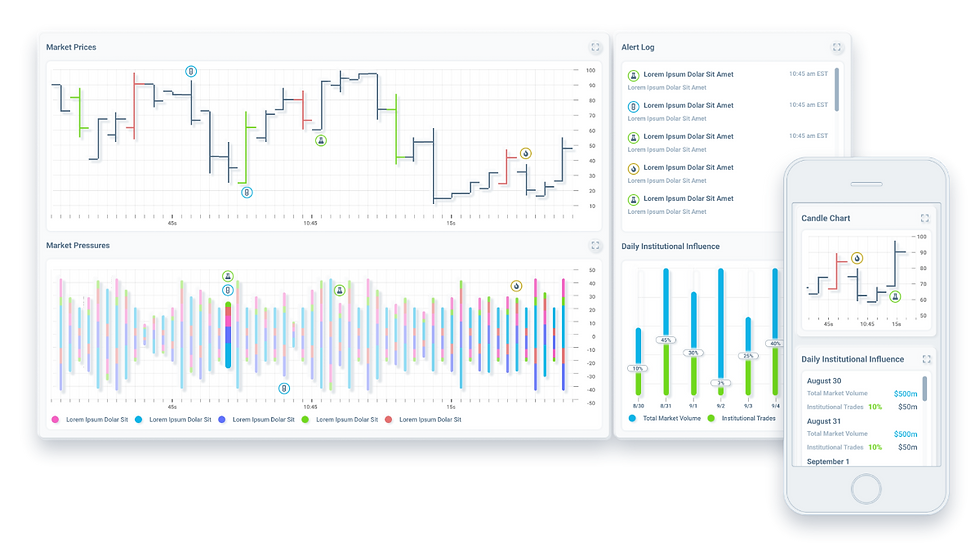

Front End Stack
Vue - Having used Vue extensively on previous projects, I knew from the start that this was the framework I wanted to use. I've used many other frameworks in the past and in my experience Vue is unmatched in developer experience and performance.

Typescript - One major downfall of JavaScript is it's loose type definitions. While this isn't normally problematic on small projects, at scale it can lead to a lot of unnecessary confusion and poor documentation. Typescript adds a layer of maturity to the language.

Spyglass Networks
Spyglass Networks is a data analytics platform for visualizing changes in market sentiment. Predictions are made based on back tested algorithms and users are alerted to likely market trend changes with reasonable time to respond.



A major challenge amateur traders face is in having the ability to respond to market changes quickly. Traders compete with bots which make trades in fractions of a second. I aimed for providing actionable insights such that our users would have plenty of time to identify an alert, evaluate their options, and act with confidence.
Provide reasonable time to take action
Business Goals
Lower the barrier of entry
The stock market can intimidate a lot of people. It's hard to understand unless you have exposure to it. I wanted to create a user experience that made the market feel approachable. Simplifying how users identify market opportunities and helping them understand their options within that context was a core focus.
Top performance
Part of increasing a users response window was providing a tool that operated at peak performance. I wanted data analysis, alerts, and actionable intel to happen the instant a market change was detected.

Everything at a glance. I wanted to allow users to parse out information quickly, to accomplish this I decided to present all functionality within a single view. I synchronized our charts so that panning or zooming on one matched movement on the others. This keeps a users context frame consistent. Additionally, I wanted users to see where influence was coming from in the form of major institutional pressures.
User Flow

The content I was sharing with users can be extremely complex and nuanced. Providing clear and concise information in layman's terms was tricky. I found that, through abstraction, I could hide away much of the less pertinent information and share content just-in-time as it became relevant within context.
Reducing complexity
Unique Challenges
High volume data
Our charts were driven by real time data streams, we needed second by second content pushed live to the user. Not only were we rapidly updating the chart data, but we had a large volume of records to display in the form of historical data. We put great focus on our caching strategies to accommodate this and provide optimal performance.

I worked as the Lead Product Engineer for this project. I planned out our go-to-market strategy, defined our road map, designed the product interface and user experience, spearheaded the engineering effort, and facilitated communication and collaboration between product and engineering teams.
I helped define our software architecture and plan out our optimization strategies. I lead product development efforts though diligent planning and management of our project management workflow.
My role
I worked with a very small but elite team on this project and it was a great experience. Our team was efficient and fast, we rapidly iterated through ideas and communicated much better without the distraction of long-winded meetings. We touched base every other day, wrapped each week with a recap meeting, and then broke in to our own groups to tackle various sections of the project. Our sprints were dense, but we move deftly through them.
Small and fast, true agility
What I learned
Plan early, adapt often
I was careful to fully talk through and game plan each feature we worked on before designs or development began. I modeled out workflows and iterated through user story exploration until I felt I had a solid grasp of the product we wanted to deliver. As challenges came up, I adapted but often with a plan already in place as most scenarios were anticipated in the planning phase and contingencies were previously prepared.
Less is more
The more we talked through our features, the more we stripped out. So much information was unnecessary in facilitating the users goal. At times I grew concerned that we were losing value in reducing our feature complexity, but when I evaluated these situations we realized we were losing sight of the users problem we intended to solve. Each time to got back on track and re-focused on the users desired outcome, I found that simplicity through abstraction was the most appropriate path forward.